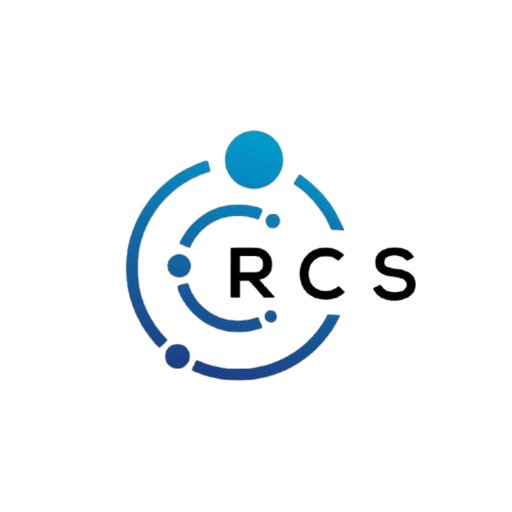In today’s fast-paced digital world, businesses and individuals rely heavily on software solutions to simplify operations, increase productivity, and manage data efficiently. However, not all software runs smoothly at all times. One recurring issue that many users report is related to the software RCSDASSK. Whether you are a beginner, a developer, or a technical support professional, understanding this problem and knowing how to resolve it can save you a significant amount of time and effort.
This guide aims to provide a complete explanation of what software RCSDASSK is, why it happens, the common signs, and the best step-by-step methods to resolve it. By the end, you’ll have a solid grasp of this issue, its root causes, and how to prevent it in the future.
What is Software RCSDASSK?
Software RCSDASSK is a technical error or malfunction that appears in certain applications, particularly in environments where complex system interactions are involved. It is not limited to one type of software but can occur across different categories, such as:
-
Enterprise resource planning (ERP) tools
-
Data management systems
-
Customized industry applications
-
Cloud-based services
Although the term sounds highly technical, at its core, it usually relates to conflicts within the software’s configuration, corrupted files, or compatibility issues between software and hardware.
Common Causes of Software RCSDASSK
To solve any technical issue, the first step is to understand why it occurs. Software RCSDASSK typically arises due to one or more of the following reasons:
-
Corrupted Installation Files
When software is not installed properly, missing or corrupted files can trigger unexpected issues. -
Outdated Drivers
Incompatibility between software and outdated device drivers often leads to recurring errors. -
Registry Errors (in Windows)
If registry entries are damaged or incorrectly modified, they can disrupt how the software functions. -
Conflicting Applications
Multiple applications running simultaneously may compete for system resources, causing errors. -
System Resource Limitations
Running resource-heavy applications on devices with limited RAM or processing power increases the likelihood of malfunction. -
Malware or Viruses
Malicious programs can interfere with software files, altering their functionality.
Signs and Symptoms of Software RCSDASSK
Recognizing the signs early is key to diagnosing the issue quickly. Some common symptoms include:
-
Frequent software crashes during use.
-
Error messages displaying “RCSDASSK” or related codes.
-
Slow system performance while running specific applications.
-
Inability to launch the program at all.
-
Missing features or incomplete loading of user interfaces.
If you notice one or more of these symptoms, there’s a strong possibility that software RCSDASSK is affecting your system.
Step-by-Step Guide to Fix Software RCSDASSK
Here’s a detailed process to resolve the issue effectively.
Step 1: Restart Your Device
Often, a simple restart can clear temporary files and reset system processes, fixing minor glitches.
Step 2: Update the Software
Check for official updates or patches provided by the software vendor. Updates frequently address known bugs and improve stability.
Step 3: Reinstall the Software
If updates don’t solve the problem, uninstall the software completely and reinstall it using a fresh copy. Be sure to download from the official website to avoid corrupted files.
Step 4: Update Device Drivers
Navigate to your system’s Device Manager and update drivers for graphics cards, sound cards, and network adapters. This ensures compatibility with the latest software version.
Step 5: Check for System Updates
Running outdated operating systems can cause conflicts. Install the latest updates to ensure better compatibility and performance.
Step 6: Run a Virus Scan
Use trusted antivirus software to scan your system and remove potential malware interfering with the software.
Step 7: Clear Cache and Temporary Files
Deleting cache files can resolve issues related to memory overload or outdated configurations.
Step 8: Check for Conflicting Applications
Disable or uninstall programs that may conflict with the affected software, especially those running background processes.
Step 9: Edit the Registry (Advanced Users Only)
For Windows systems, advanced users can repair corrupted registry entries. However, this should be done with caution, as incorrect edits can destabilize your entire system.
Step 10: Contact Technical Support
If none of the above methods work, reach out to the official support team. They can provide custom solutions based on your software’s specific version and system setup.
Preventing Software RCSDASSK in the Future
Fixing the issue once is important, but preventing it from reappearing is even more critical. Here are preventive measures you can take:
-
Regular Updates
Keep your software and operating system updated at all times. -
Scheduled Maintenance
Perform routine system checks, including disk cleanup and driver updates. -
Backup Important Files
Always maintain backups of essential data to avoid permanent loss during system failures. -
Install Reliable Antivirus Software
Protect your system from malware that could corrupt application files. -
Avoid Unauthorized Software
Download software only from official sources to minimize risks of corrupted or malicious files.
Advanced Troubleshooting Methods
For IT professionals or advanced users, there are additional methods to consider:
-
System Restore: Roll back your system to a point before the issue appeared.
-
Safe Mode Booting: Run your system in Safe Mode to check if the issue persists.
-
Virtual Machine Testing: If possible, run the software on a virtual environment to identify whether the error is system-specific.
-
Event Viewer Logs: In Windows, the Event Viewer provides detailed logs that can help trace the exact cause of the error.
Impact of Software RCSDASSK on Businesses
In business environments, software malfunctions like RCSDASSK can cause significant setbacks. These include:
-
Downtime: Employees may be unable to perform their tasks until the issue is resolved.
-
Data Loss: Unresolved errors can result in the loss of critical data.
-
Reduced Productivity: Slow or crashing software directly impacts efficiency.
-
Financial Loss: Extended downtime can result in missed opportunities and revenue loss.
This highlights the importance of having proactive IT strategies in place for organizations.
Real-World Example
Consider a company using a customized customer relationship management (CRM) system. Suddenly, employees start facing error messages labeled as RCSDASSK, and the software crashes during peak working hours.
-
The IT department identifies outdated drivers as the root cause.
-
They update the drivers, reinstall the CRM software, and perform a system cleanup.
-
The problem is resolved within hours, preventing extended downtime and data loss.
This case demonstrates how a systematic approach to diagnosing and fixing software RCSDASSK can minimize its impact.
Conclusion
Software issues like RCSDASSK can be intimidating, especially for non-technical users. However, with a structured approach to identifying the cause, applying step-by-step solutions, and implementing preventive measures, these problems can be effectively managed. Whether you’re an individual facing the error on your personal computer or a business trying to keep operations running smoothly, the key lies in staying proactive, updated, and vigilant.
By understanding the nature of software RCSDASSK, you now have the knowledge to troubleshoot, fix, and prevent this issue in the future. See more

